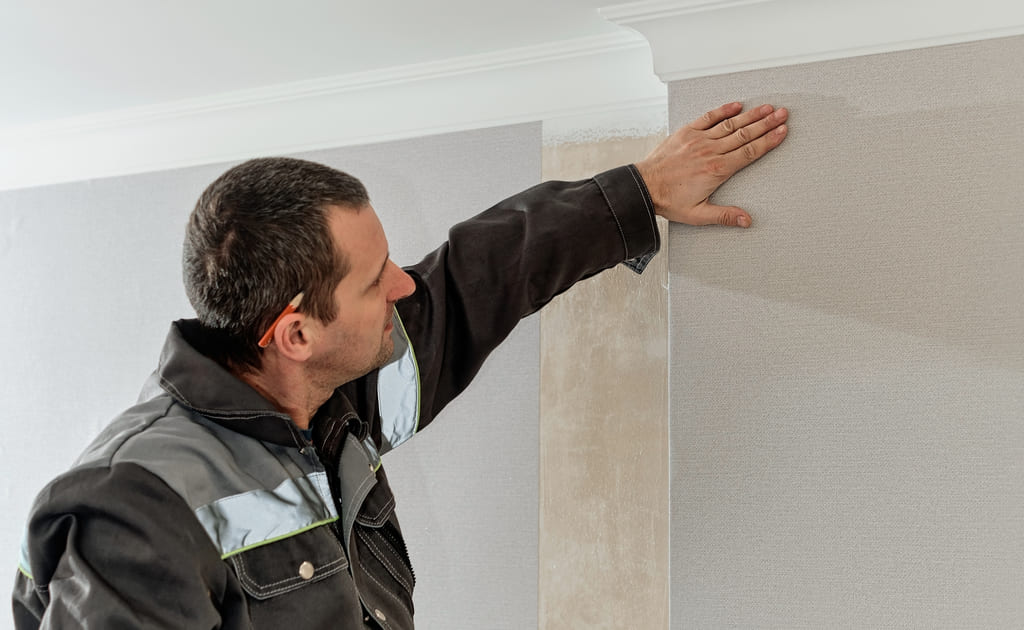What is the best thermal insulation for interior walls? Optimizing the insulation of our home represents a smart investment that offers greater comfort and long-term savings. However, it is crucial to understand essential concepts and recognize that the insulation strategy is as relevant as the materials used.
We are Leba, a Construction Company in Malaga and Marbella, find out how we work as a Construction Company and contact us!
What is the best thermal insulation for interior walls?
Thermal insulation refers to the ability of a material to resist temperature changes and the transfer of thermal energy. Its function is to protect the home from both heat and cold, thanks to its internal structure that blocks the flow of thermal energy.
Below are some of the most commonly used thermal insulators in construction, recognized for their low thermal conductivity and ability to provide a high level of insulation.
Polyurethane foam
Polyurethane foam, part of the plastics family, is applied in the form of a foam that then solidifies. This characteristic makes it possible to cover even the most difficult nooks and crannies, although it is sometimes difficult to control the uniform thickness. In terms of insulation, its thermal conductivity ranges from 0.025 to 0.035 W/K-m.
Extruded polystyrene (XPS)
This petroleum-derived material is supplied in panels. It is one of the most efficient insulators, with a thermal conductivity ranging between 0.025 and 0.039 W/K-m. In addition, its low absorption capacity and high compressive strength are remarkable.
Expanded polystyrene (EPS)
Similar to XPS but slightly more absorbent, expanded polystyrene is derived from petroleum. Its insulation capacity ranges from 0.029 to 0.046 W/K-m, making it an effective and affordable insulation option, quite popular today along with XPS and mineral wool.
Mineral wool
Also known as rock wool or fiberglass, this material usually comes in flexible or semi-rigid panels. Its thermal conductivity varies between 0.031 and 0.05 W/K-m. It is produced by fusing rock or glass into tiny fibers, then pressing and agglomerating them into panels. Its versatility for insulation, along with its flexibility and relatively simple handling, makes it popular.
Cellulose
Cellulose, an environmentally friendly insulator, is made from shredded paper treated with flame-retardant additives. Its thermal conductivity is around 0.04 W/K-m. It is often applied by blowing or blowing, and is a good choice for filling spaces such as air chambers.
Wood fiber
Although less well known, wood fiber is a valid option with a thermal conductivity of around 0.038 W/K-m. It comes in rigid or flexible panels and, in addition to its insulating properties, it stands out for its sustainability.
Expanded cork
Cork is a natural thermal insulator extracted from the bark of the cork oak tree. Thermal conductivity between 0.037 and 0.040 W/K-m. It is supplied in the form of rigid panels and is especially useful in applications such as facades, roofs and floors, due to its durability and resistance.
Cellular glass
This material stands out for being rot-proof, impermeable, incombustible and antiseptic, which makes it particularly valuable in certain contexts. Its thermal conductivity varies between 0.035 and 0.04 W/K-m, but its cost is generally higher than other insulators. Its use is often reserved for specific insulation points.
After learning about thermal insulators, we still have the question of which is the best thermal insulator for interior walls. We can say that the most efficient thermal insulators are polyurethane foam and extruded polystyrene (XPS) due to their low thermal conductivity. However, the thickness of the insulation is also crucial: more thickness means better performance. For example, 10 cm of cork insulates more than 5 cm of XPS.
Although some insulation materials outperform others, not all are suitable for every home or building site. Each material has its own specific shapes and conditions. To make the best decision, it is advisable to have an architect consider the particularities of the house and determine the most suitable insulation.
This has been all about what is the best thermal insulation for interior walls, we hope you liked it! Do not hesitate to contact our team to learn more about our comprehensive construction services.


